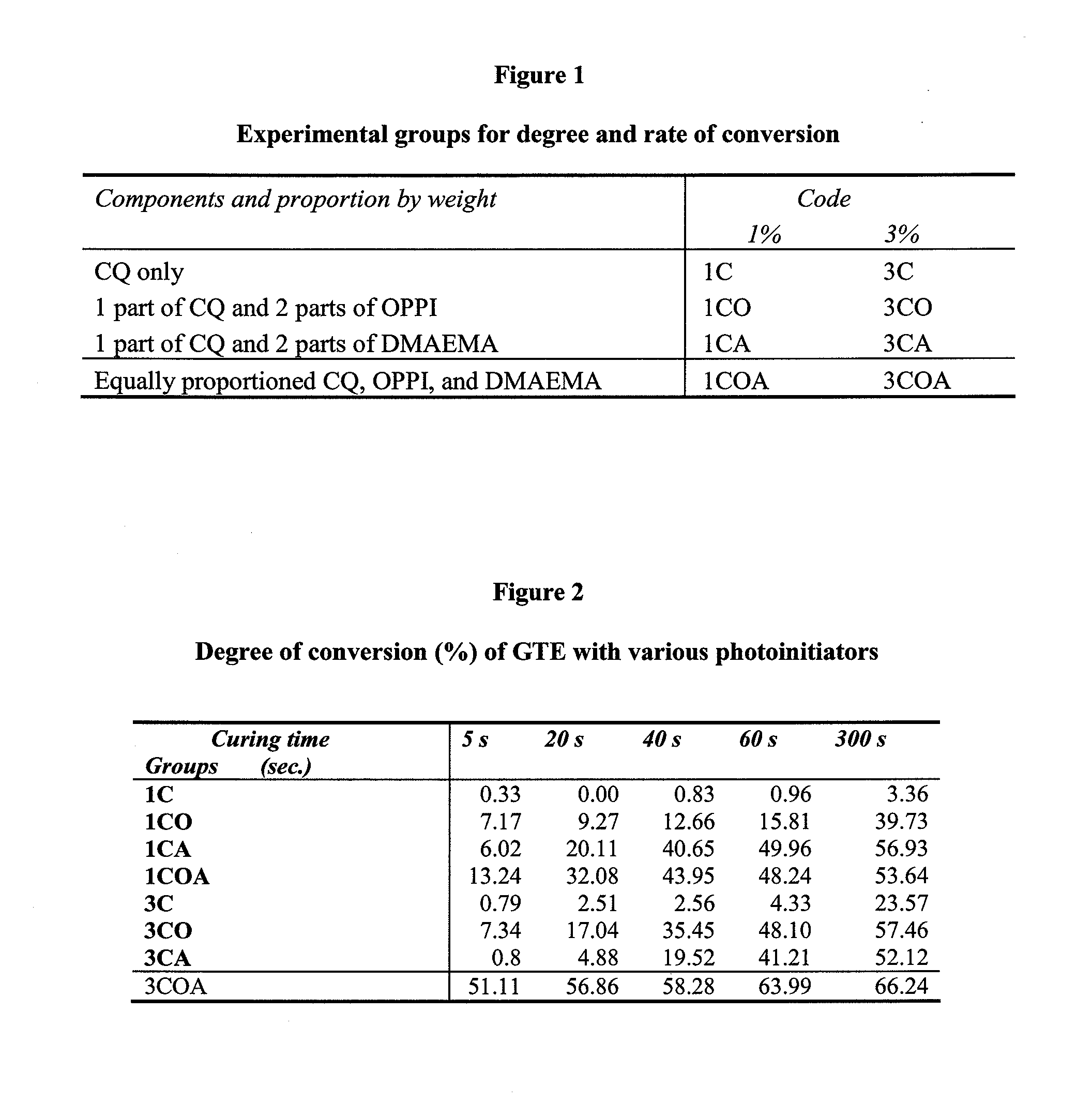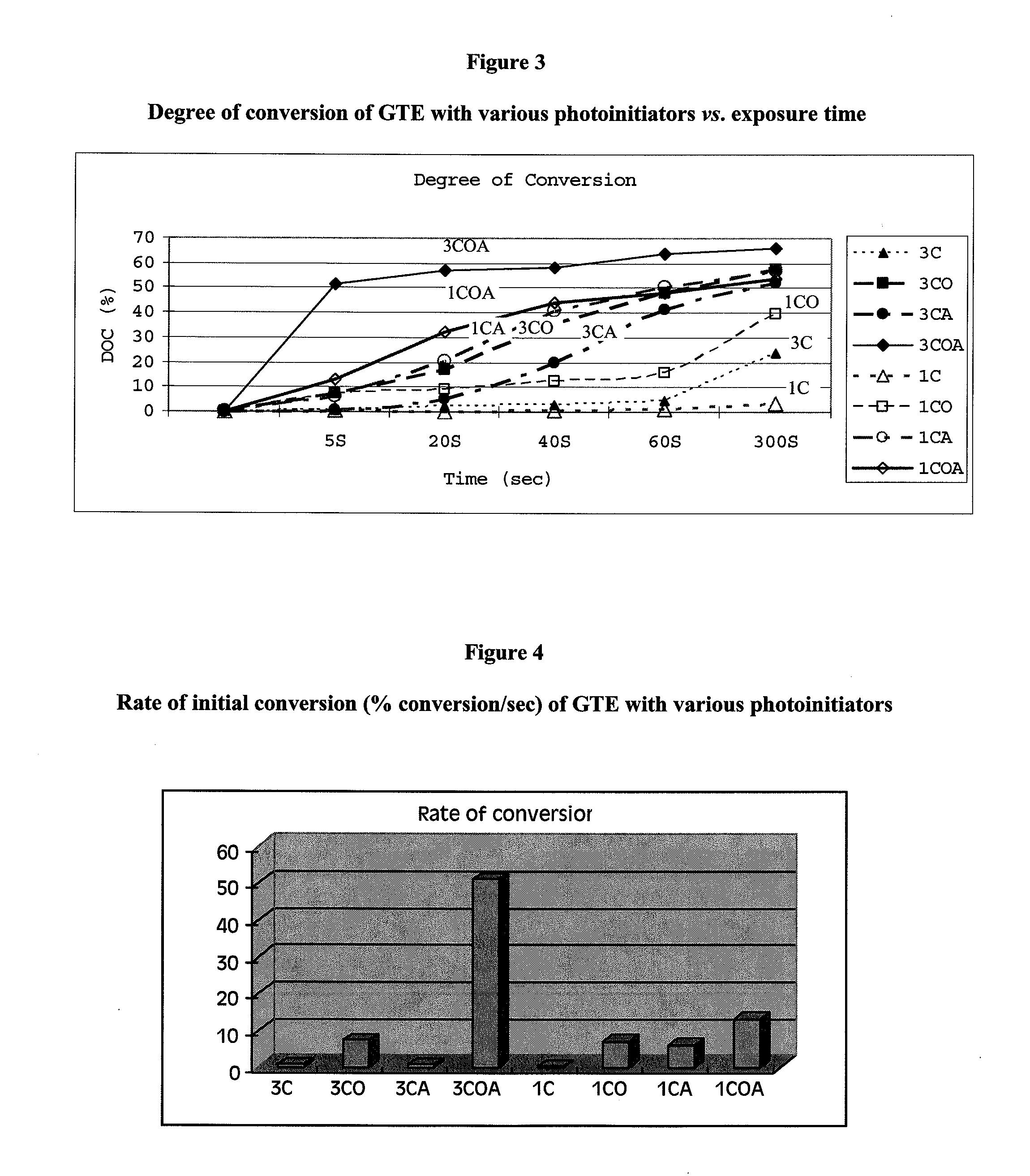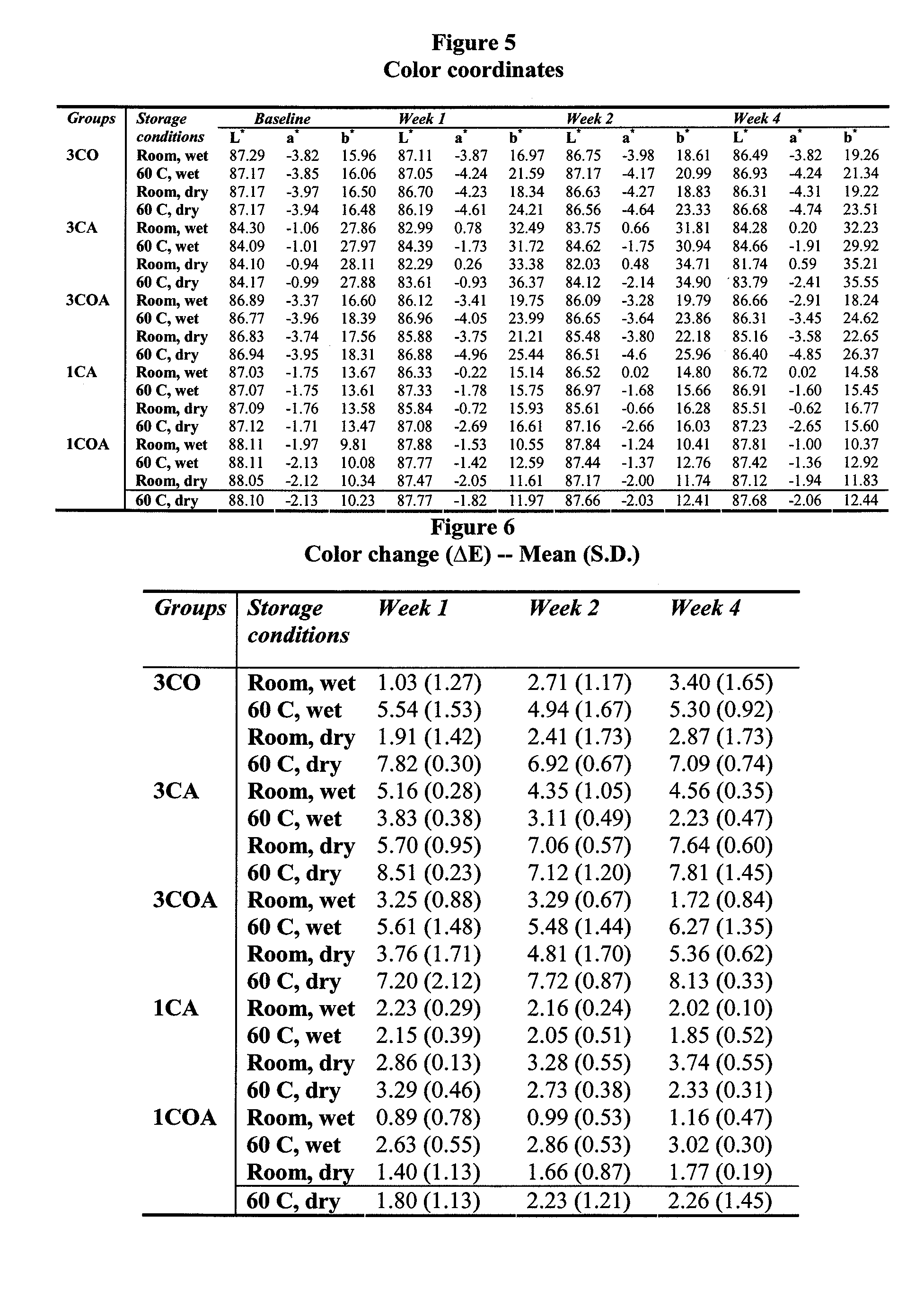Light- and Dual-Cure Dental Resins and Adhesives With Increased Cure and Color Stability and Low Color
a dual-cure, resin technology, applied in the field of polyacrylate materials and/or lightand/or dual-cure resins, can solve the problems of low cure degree, inability to achieve color stability, and inability to meet the needs of patients, so as to reduce shrinkage stress, improve cure degree, and reduce color
- Summary
- Abstract
- Description
- Claims
- Application Information
AI Technical Summary
Benefits of technology
Problems solved by technology
Method used
Image
Examples
example 1
[0114]Novel free-radical photoinitiator systems that improve rate and degree of conversion, color and color stability of light curing resins
Issue 1
[0115]Investigating p-octyloxy-phenyl-phenyl iodonium hexafuoroantimonate (OPPI) as a photoinitiator, in combination with camphorquinone / amine photoinitiation systems, for use with di(meth)acrylate-based composite resins. The investigation determined if the inclusion of OPPI improved degree and rate of conversion, initial color and color stability of a representative composite resin dental material.
Method
[0116]CQ and OPPI were combined in various proportions with the amine co-initiator 2-dimethylaminoethyl methacrylate (DMAEMA) and used at two levels in which CQ+OPPI+DMAEMA=1 wt. % or 3 wt. % to photo-initiate a BisGMA / BisEMA / TEGDMA (37.5:37.5:25 wt. %) monomer blend.
[0117]A total of eight groups (4 groups for each level of total photoinitiator, 1% and 3%) were tested according to the following proportion of components in the photoinitiat...
example 2
Materials and Methods
[0130]Monomer mixture was made by mixing 37.5 wt % BisGMA (lot # 568-21-07, ESSTECH, Essington, Pa.), 37.5 wt % BisEMA (lot # 474-32-02, ESSCHEM Inc. Linwood, Pa.), and 25 wt % TEGDMA (lot # 597-23-02, ESSTECH).
[0131]Total concentrations of 1 wt % and 3 wt % of variously proportioned photo-initiators (CQ / OPPI) or / and DMAEMA were added to make the monomer mixture curable. Eight groups (four groups in each concentration) according to the weight proportion of those components were tested (Table 1). Those kinds of works were done under filtered orange light.
1. Degree and Rate of Conversion
[0132]FT-IR, HPLC, and NMR have mainly been used for the determination of the photopolymerization efficiency of dental resins. However, the use of FT-IR absorption spectroscopy is the easiest and simplest method. Therefore, degree of conversion (DC) was determined using a Fourier transform infra-red (FTIR) spectrophotometer (Nicolet 520, Nicolet Instrument Corp., Madison, Wis.) in ...
example 3
[0183]Novel photoinitiator systems to improve rate and degree of double-bond conversion in both BisGMA-based conventional monomers and low-shrinkage experimental monomer resins
Issue 3
[0184]To determine the effects of the combination of p-octyloxy-phenyl-phenyl iodonium hexafuoroantimonate (OPPI) with other initiators and photosensitizers on the degree of conversion (DC) and volumetric shrinkage of a BisGMA-based composite resin (GTE) and a low-shrinkage liquid crystal monomer (LCM) based composite resin.
Methods
[0185]Samples were made with various ratios of photosensitizers (camphorquinone [CQ] and / or 1-phenyl 1,2-propanedione [PPD]) and photoinitiators (OPPI and / or 2-dimethylaminoethyl methacrylate [DMAEMA]). Half of the samples were of GTE, a BisGMA-based composite resin (BisGMA / TEGDMA / BisEMA [37.5:37.5:25 by % wt]), and the other half were of a LCM-based composite resin (C6-tbutyl-dimethacrylate). The use of PPD is elaborated in U.S. Pat. No. 6,204,302, “Photosensitizers for free ...
PUM
| Property | Measurement | Unit |
|---|---|---|
| diameter | aaaaa | aaaaa |
| diameter | aaaaa | aaaaa |
| particle size | aaaaa | aaaaa |
Abstract
Description
Claims
Application Information
 Login to View More
Login to View More - R&D
- Intellectual Property
- Life Sciences
- Materials
- Tech Scout
- Unparalleled Data Quality
- Higher Quality Content
- 60% Fewer Hallucinations
Browse by: Latest US Patents, China's latest patents, Technical Efficacy Thesaurus, Application Domain, Technology Topic, Popular Technical Reports.
© 2025 PatSnap. All rights reserved.Legal|Privacy policy|Modern Slavery Act Transparency Statement|Sitemap|About US| Contact US: help@patsnap.com



